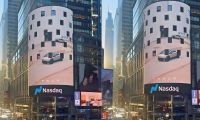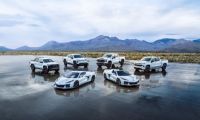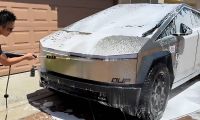Tesla Going to the Moon - Here's Why
Tesla and its stock are going to the moon and there are quite a few reasons why. We'll go over what those are now, including Indonesia, robotaxis, infrastructure, costs, Tesla's mission, FSD, and all the numbers why.
Reasons Tesla and Its Stock Are Going to the Moon
Indonesia
As the country with the world's largest nickel ore production and reserves, Indonesia is a vital and strategic location for minerals. Indonesia has a vital role in the global nickel trade for any company interested in batteries, EVs, or energy storage. Indonesia produces 1 million metric tons each year or 37% of the worldwide nickel production of about 2.7 million metric tons. Indonesia could supply Tesla with enough nickel for 20 million cars per year!
Local
There are advantages for Tesla sourcing local ingredients - a factory on every continent. This cuts down on exports and tariffs. People in Indonesia may not be able to afford $60,000 Tesla vehicles. I think Tesla's solution to this is going to be very simple - just run robotaxis in Indonesia for a very cheap cost. Indonesia is going to be a local market there. The dedicated robotaxi will most likely launch in Indonesia!
Robotaxi
How is Tesla going to get to having driverless cars with all the rules and regulations? I think it will be the dedicated robotaxi running in Indonesia. It will have no pedals and steering wheel. I think Indonesia may have a dedicated robo-bus. There are less issues with personal space in other nations than the United States. Other cultures will accept it, especially if its low cost and a better alternative than existing public transport.
Rush Hour
The buses may be able to handle 16 people at a time during rush hour - or have additional capacity for busy times.
Infrastructure
Charging infrastructure will be difficult to setup in Indonesia. The cars will need to dock in a car park at night. Tesla may need a similar business model as Lime Scooters. Tesla could hire this company to manage the vehicles. Other people could manage and clean the robotaxis for them and pay the local for their work. Indonesia will cost less to do this than the U.S.
More Reasons
Cost
In Indonesia, there is more traffic on the roads and the cost per mile is more than the U.S. However, single passenger vehicles are not as affordable in Indonesia. For a dedicated robotaxi though, someone in Indonesia could justify paying a little more due to the existing low quality of public transport. Tesla could make 5 times more per robotaxi than in the United States - more if they charge more, less if they charge less.
Mission
Tesla's mission is to accelerate the world to sustainable energy. I think they will adapt to each country and the needs there in order to make this happen. Robotaxis starting in Indonesia is good for the mission and the few hundred million people that live there. All the polluting cars there will be replaced with a robo-bus or robotaxi. The cars in poorer countries have a worse miles per gallon in their ICE vehicles.
Regulation
What if a robotaxi hits someone and injures them or kills them. This will be a big event when it happens. The government can only afford to regulate so much. In Indonesia, 7,000 people per year die from air pollution.
Pollution
If the government were to do something about the pollution in Indonesia, they would definitely facilitate the propagation of robotaxis and electric vehicles. You would also hope that the robotaxis would reduce road fatalities.
Incentive
Indonesia has a lot more to gain from having robotaxis and Tesla vehicles on the road. The government there should do what they can to facilitate robotaxi regulation. They may offer robotaxi credits. If the robotaxis are made locally, that's even better.
FSD
Tesla has been collecting the most data in the United States. The U.S. will get FSD, but won't get robotaxis immediately. It's the poorer countries with worse pollution that need them most. Most robotaxis in the U.S. will be privately owned Model 3 or Model Y vehicles.
Numbers and Summary
What will this do to Tesla and its business. What about its stock? It could have a many multiple affect on the stock price. If you have 10's or even 100's of millions of robotaxis and robo-buses operating around the world, then you have a company doing nutty numbers in profits. Tesla could easily get to $10,000 per share in the next decade and they are part of a huge and important mission in the world.
Will Tesla get robotaxis all around the world? Will Indonesia have the first robotaxis?
For more information, see this video below by the Tesla Economist
Leave your comments below, share the article with friends and tweet it out to your followers.
Jeremy Johnson is a Tesla investor and supporter. He first invested in Tesla in 2017 after years of following Elon Musk and admiring his work ethic and intelligence. Since then, he's become a Tesla bull, covering anything about Tesla he can find, while also dabbling in other electric vehicle companies. Jeremy covers Tesla developments at Torque News. You can follow him on Twitter or LinkedIn to stay in touch and follow his Tesla news coverage on Torque News.












